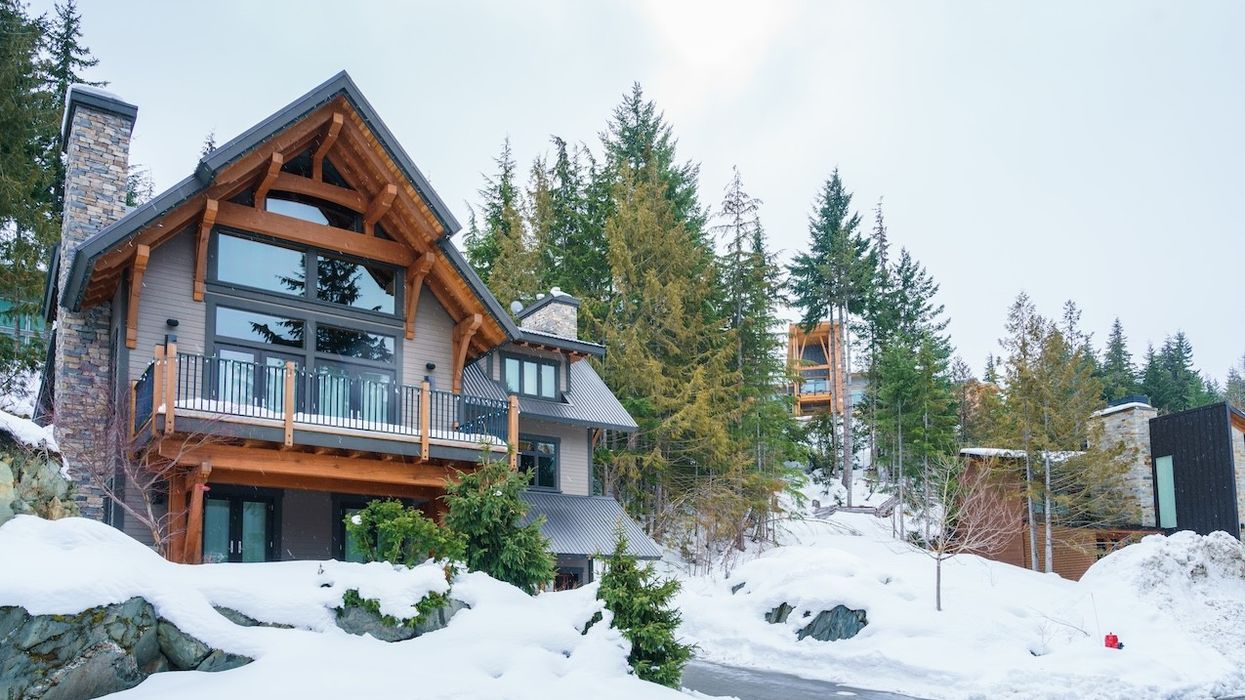Canada may be home to a number of world-class ski regions, but home sales in many of those snow-covered areas have been in need of a lift this year.
According to a new report from Royal LePage, the majority of winter recreational regions surveyed (59%) recorded double-digit declines in the number of homes sold during the first 10 months of 2023, compared to the same period last year. What's more, nearly half (47%) of the local experts surveyed across the country reported shrinking demand in their respective regions, as well as an increase in inventory (88%) and the average number of days on market (82%).
"Unlike purchasing a primary residence, most people in the market for a recreational property have the luxury to wait for the right home to come along, or for more favourable market conditions," said Pauline Aunger, Broker of Record for Royal LePage Advantage Real Estate.
As a result of dwindling demand, Canada's winter recreational markets saw prices slip by 0.7% in the first 10 months of the year to a new average of $1,068,200. Although largely due to high interest rates, the rising cost of living, and "a general uneasiness about the state of the economy" — just like virtually every other housing market in the country — winter recreational markets had an additional dampening factor. Nearly a quarter of these markets reported a decline in buyer demand due to climate factors or environmental disasters following an unprecedented wildfire season.
“This was the worst year for wildfires in Canadian history. For those buying or selling a home, this crisis was a source of concern and confusion as dangerous conditions prompted market disruptions,” said Aunger said. “As the intensity and frequency of wildfires are expected to increase as a result of climate change, we can anticipate that extreme weather events will continue to influence our recreational property markets and consumer decisions.”
Whistler, perhaps Canada's most well-known ski region, saw prices remain relatively flat in 2023, sliding down 0.4% in the first 10 months of the year. But at the same time, demand took a tumble, with sales down 12.3% year over year. Whistler is typically a destination for more affluent homebuyers — sales prices for a single-family home usually start at $3M — who are more easily able to absorb the impact of rising interest rates. Because of this, the report notes, the true effects of higher interest rates have yet to be felt in Whistler and are likely to be seen between 2024 and 2026 when many five-year mortgages will be up for renewal.
BC's Sun Peaks and Big White were also hit hard in the sales department, falling 47.7% and 30.5%, respectively. However, local agents attribute this to fewer properties coming on the market, noting that the ones that do are being snapped up. Even still, prices for single-family homes were down in both regions, falling 21.3% and 6.3%, respectively.
Alberta's Canmore region saw a sizable 17.2% decline in sales, though prices still managed to climb 9.6% year over year during the first 10 months of 2023. Brad Hawker, Associate Broker at Royal LePage Solutions, notes, however, that the sales volume "continues to revert back to pre-COVID norms," and that sales conditions are typically still in the seller's favour.
Over in Quebec, Mont-Tremblant experienced a 33.5% decline in sales volume, but single-family home prices still saw an increase, growing by 7.8%.
"During periods of rising interest rates, the luxury real estate market in the Mont-Tremblant area is typically less affected, since a significant proportion of buyers do not finance their homes. This accounts for the fact that prices continued to rise in the region this past year," said Corina Enoaie, Residential and Commercial Real Estate Broker at Mont-Tremblant Real Estate, a division of Royal LePage.
Looking into 2024, Royal LePage remains optimistic for the winter recreational market as a whole, forecasting a 2.9% growth over the next 12 months in the price of single-family homes. This, however, is based on the expectation of stabilized interest rates throughout 2024.
"While demand has weakened and supply has increased compared to the pandemic-fueled boom, market activity is trending back to normal historical levels," said Aunger. "This will keep prices on a modest upward trajectory in the coming year as Canadians continue to seek out a spot on some of the world’s most desirable slopes."





















